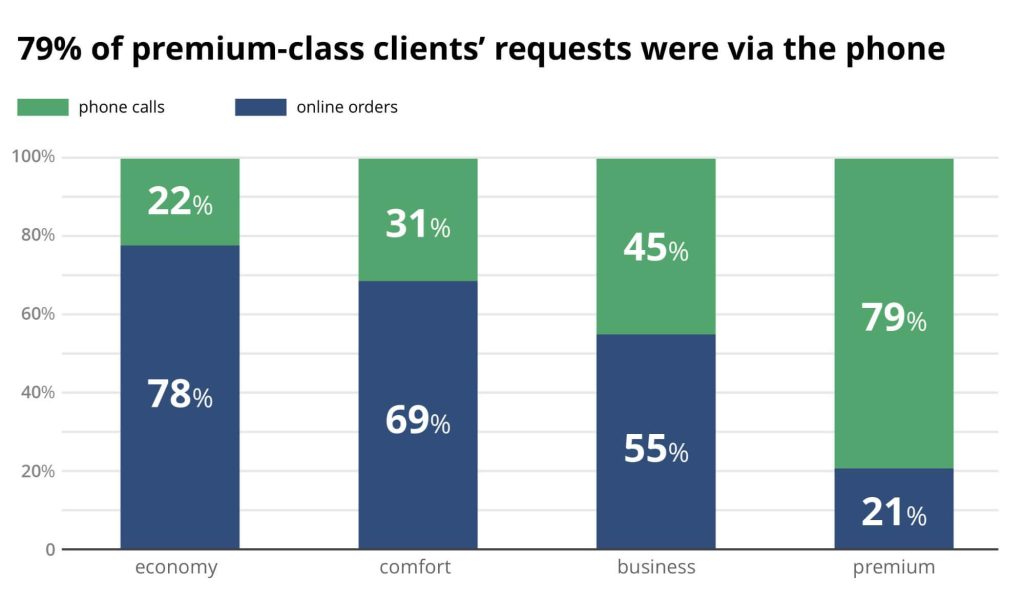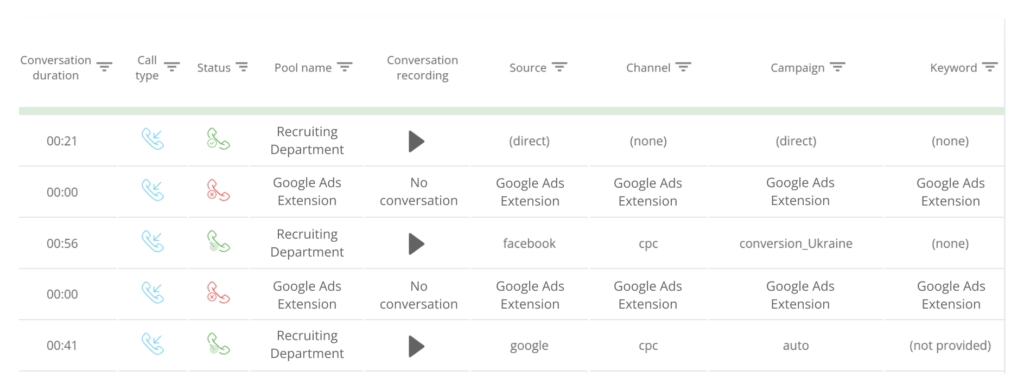What if every time you plan out the advertising budget, it seems like a wild stab in the dark? Even if you carefully evaluate costs, it doesn’t guarantee that the company will boost sales. The recipe for a money vacuum is quite simple: a dash of incompetence + a spoonful of lack of analytics data + mix thoroughly with ample laziness. Don’t get me wrong, successful planning is possible. In this blog post, I hope to crack open opportunities on how you can squeeze the maximum from an advertising budget without added costs.
Time flies. Then money is wasted, but you still don’t have enough leads and sales. Who’s guilty then? The head of the sales department says,“That happened because of bad marketing. Nobody calls from advertising. Even if somebody calls, he wants to buy a gizmo we don’t have.” Sure, the marketer has another opinion, “Sales managers aren’t competent. Every time I walk through their department, I hear one-word, perfunctory answers to clients’ questions. Looks like they aren’t interested in hustling for new leads.”
This endless process reminds one of witch-hunting. Likewise, it doesn’t bring any tangible results.
That’s why both marketing and sales department should exclude their own mistakes to increase the company’s revenues.
Tips for Marketing
1. Get a full value of analytics
“Thanks for the advice, Captain Obvious,” you think.
Nevertheless, lots of companies haven’t set up their analytics properly yet. So let’s start with the basics.
UTM parameters. Unless you track traffic sources, your knowledge about searches will stay too generic. Say, you have a web page on Facebook and fire off a few ad campaigns there. Sometimes your partners post links to your website on their pages. Google Analytics displays that you have 300 clicks from Facebook. How to differentiate them? You can’t say exactly without the UTM parameters. You can create custom URLs by visiting Google Analytics URL builder.

Goals. Set up the goals for each key event you want to track. Otherwise, you will see only traffic sources but won’t have an idea of visitors’ activities on your website. Let’s say, you have 100 clicks from referral links and 50 clicks from the organic search. Do the links perform any better? It’s not a fact. Set goals and learn which visitors left your website very fast and which ones made an order, subscribed to your newsletter etc. Your goals should depend on the specifics of your business.
Tools. If your business is mostly built on online sales, it’s enough to use web analytics services. Actually, there are a few businesses where all the clients order the product online. Even if the one-click purchasing is possible in online stores, clients prefer to call. Why? The reasons can differ. Sometimes the customers want to specify the product characteristics or don’t understand how to make the order. By the way, the more expensive the product is, the more often buyers prefer to call. Here’s the statistics from our research which displays the premium-class customers call in most cases.

In some businesses, sales happen only via phone and website acts as a shop-window. Say, company X launched the ad campaign which didn’t bring any adding to the orders cart. Google Analytics shows that this campaign isn’t efficient. However, this campaign generated 50 calls and 25 sales which you can’t see on the analytics system.Therefore, if your companies receive more than 30% of orders via the phone, the call tracking is decisive. This technology helps identify which ad sources, campaigns, and keywords generate calls. Call tracking data is easy to analyze on analytical systems all together with information about online conversions. Owing to integration with Google Analytics, you may track one more goal there — a phone call. Thus, a marketer squeezes the maximum value from analytics reports and gets a complete picture of the advertising’s performance.
Here’s an example of data which you see not using call analytics.

Let’s compare what you see by adding call data to reports.

In this way, it’s easy to understand the real value of each ad channel. The example shows that Adwords generate more calls than online orders. Why not find out the reason as to why all the leads are not converting?
Also, you see that billboards also bring calls. So you may draw a conclusion about their profitability.
2. Set up e-commerce module
It’s a must-have tool for online stores. Thanks to this module, experts can clarify many sales metrics. For example, what is the overall value of all the goods in the store, which commodity is the most popular etc…
By checking this data, you can draw conclusions regarding the profitability of different products. Perhaps, some ad campaigns need to be stopped, because they promote products people don’t actually need.
3. Track and analyze on a daily basis
To avoid this, track following metrics on a daily basis:
- which keywords are the most expensive;
- where the most traffic is coming from;
- peak time when the users are most active;
- which gadgets website visitors use.
If the company has already been using call tracking, the marketer should pay close attention to the following issues:
- if the advertising brings calls;
- which campaigns and keywords make customers call;
- call distribution by day of the week and time of the day;
- which regions are the most active in terms of calls.
Owing to call analytics, a marketer can prove the efficiency of their advertising efforts by providing clients with reports on calls from PPC or another ad channel.
Here’s the sample.

However, when it comes to advertising, only quality counts. Therefore, the marketer needs to understand whether the campaign brings a target traffic. With that in mind, you can listen to calls and analyze the keywords which generated them. Another easy way to value traffic value is tagging calls. After receiving the call, the manager chooses the call category — sale, consultation or spam.
4. Optimize
In the opinion of Olga Ovsienko, Head of PPC department at Sotnik, to start ad campaigns is just a 20% of success. But that’s only the tip of the iceberg. The rest of the iceberg is ad optimization, which is 80% of success. That’s why you should get armed with comprehensive reports to make a data-driven decision while optimizing advertising.
Unfortunately, there are no universal secrets of effective optimization. Every company has a unique approach. However, we can share a few general principles:
- Identify the effectiveness of campaigns and keywords. Enable inefficient ones. Try low-frequency keywords which can save your money.
- Choose the priority regions. Determine the cities and regions which bring the most traffic to your website. Allocate the budget accordingly.
- Correct bids depending on visitors’ gadgets. If the most customers call from smartphones, you need to launch the mobile version of a website or even app.
Tips for Sales Department
Sometimes marketing generates leads, but they churn after communication with a sales department. In this way, ad budget is back to getting nowhere all over again. Therefore, it’s critical to have an intelligent approach to sales. How can one provide that?
1. Reduce the number of missed calls
If a sales manager misses calls, marketing efforts are powerless and minimized. Hence the head of the sales department should check the report on missed calls on a daily basis. If more than 5% of calls are missed during working hours, the company experiences problems.
By the way, you don’t need to manually calculate the rate of missed calls. In your project at Ringostat, you can actually see those numbers on the dashboard.

2. Control if the managers call back in the case of missed calls
Never mind if the managers miss calls, but fast process them and call right back. For your convenience, we have an additional report on the missed calls that weren’t called back. Thus, you can easily view which phone calls remain unanswered.
3. Listen to calls
It’s the easiest way to check the competence and communication skills of managers. Pay attention to their weaknesses. How well do they sell? How do they handle objections? Do they try to upsell and increase the average check?
Also, you can use recordings of successful conversations to train inexperienced newbies.
It goes without saying, that listening to all the calls takes a huge amount of time. So it’s better to focus on target calls. A target call is a call during which the length is more than set-point. You can manually set it up in project settings. It will allow you to take into consideration only meaningful calls for your business. Usually, their length is 5-10 seconds.
4. Optimize the working schedule of sales department
Call analytics gives the opportunity to notice reasons for losing clients. For example, sometimes users are more active in the off hours of the company. Ringostat has a specific report about a call center’s volume by day of the week and time of the day.

This screenshot shows that the standard schedule from 9AM to 6PM with a one-hour lunch break isn’t suitable for the company. It’s better to have two shifts which will change each other from 8AM to 7PM. Employees should have a flexible lunchtime because there are a lot of calls in the afternoon. Wednesday and Thursday are the busiest days. Probably, it’s crucial to engage more sales managers for call processing these days. The company receives some calls on the weekend, so there’s the importance of assigning duty managers for Saturday and Sunday.
5. Analyze the performance of each manager
It’s easy to create a report about each manager’s performance at Ringostat. If you use CRM integrated with a call tracking, you can receive more helpful information.
Track the following metrics for each manager:
- the number of sales and conversion rate from calls to closed deals;
- processed leads;
- incoming calls within deal;
- missed calls and calls with long waiting on line.
Based on this data, the head of a sales department can calculate the average metrics, set new goals and сreate a motivational system.


